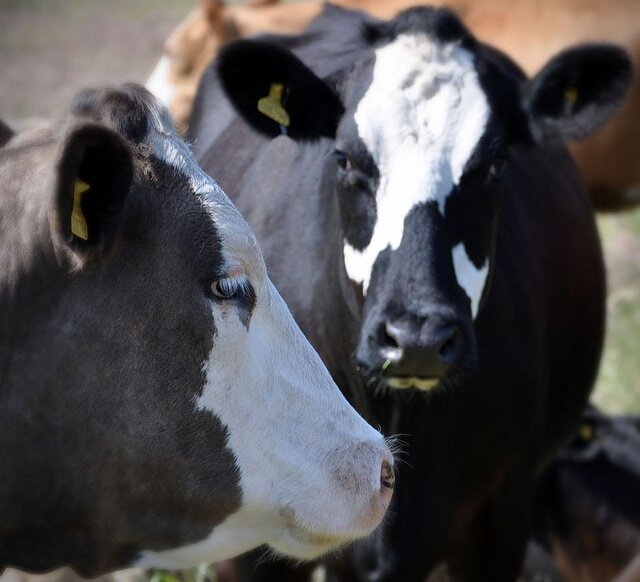The Beef Cattle Industry
Unlike the dairy industry, both male and female cows are used in the beef industry, and like the dairy industry, artificial insemination is also preferred to natural mating in the beef industry. Calves, (as males are also used in this industry) when they are very young are subjected to a variety of surgical procedures without anesthesia including disbudding or dehorning, ear tagging, castration, either with a blade or where an elastic band is tightly clamped around the base of the testicles, which restricts blood flow until the testes eventually rot and fall, and lastly branding with a hot iron. Calves who get sick typically lack veterinary care and thus deteriorate quickly. In non-organic cattle, drugs including antibiotics, growth hormones, vitamins and supplements, and progesterone for maintaining pregnancy are injected or inserted vaginally or orally. As they get older, regular routines such as sorting or checking for pregnancy see the cattle forcefully herded through yard systems into restraint boxes called a crush for individual attention.
Grass-fed cattle graze independently for food. They aren’t given supplements like grain and have a “natural” lifestyle. Grass-fed cattle are supposedly more “ethical” than other modes of raising cattle. Grass-fed cattle are different than pasture-raised as though these cattle do it whatever is in the pen, they are also supplemented with grains and are therefore not 100% grass-fed.
80% of beef sold in major domestic supermarkets comes from cattle who have spent the last 10-15% of their lives packed into barren feedlots where they are fattened up with grain before slaughter at 18 months of age.
At the slaughterhouse, they are forced into the knock box, a crate with high walls to prevent them from jumping out, from which they will desperately try to escape. A captive bolt gun is the most common method of stunning cows, but the smaller guns especially bare often ineffective such large animals, causing only pain and limited mobility, but not unconsciousness. A rifle is a less common alternative. Their throats are then slit and hung upside to increase bleed out and speed up death. For cows slaughtered while pregnant, the blood from unborn calves, known as fetal calf serum or fetal bovine serum, is of great value to the pharmaceutical industry - up to $600 per liter. In addition to witnessing the animals before them being stunned, killed, and sometimes even the processing, in most cases, they are forced to hear their fate from the next room.
The hides of cows are sent to tanneries to be turned into leather. A majority of it is exported overseas. There is a common miscommunication that leather is a byproduct of the meat industry intended to reduce waste. It is far more accurate to say that it is a co-product sometimes more economically valuable than meat to the point where more and more animals are being killed for their skin rather than for their flesh.
It seems like when talking about the quality of life of an animal, cattle come up. It is nice to imagine that they live in the sun eating grass with their friends and don’t suffer. In fact, organic or family-raised cattle and non-organic or mass-produced cattle sometimes end up at the same slaughterhouse, treated and abuse the same way; the quality of life is irrelevant because the end goal and product are the same and all suffer.
AustralianPigFarming, director. Dominion (2018) - Full Documentary [Official]. YouTube, YouTube, 9 Oct. 2018, www.youtube.com/watch?v=LQRAfJyEsko&t=1403s.
images credited to @livekindlyco and @dominionmovement






